As a quality manufacturer of contact lenses, SEED knows what it takes to make sure we all have a clear vision of the future

Over the last 25-30 years, Japan has seen the rise of regional manufacturing competitors who have replicated Japanese monozukuri processes but done so at a cheaper labor cost, pushing Japan out of mass markets. However, we still see that many Japanese firms are leaders when it comes to contact lenses. How have Japanese firms been able to maintain this leadership despite stiff price competition?
Japan as a consumer market has a large number of people suffering from myopia which is also historically quite high. In fact, there are no official figures for how many people in the country suffer from myopia, however, judging from school medical records published by the Ministry of Education, I think that the report suggested about 70% of high school students have visual acuity of less than 1.0, and most of them are said that they are myopic, and that number is rising around 1% annually. Some people said that number to be around 80% in 10 years.
There are many reasons why myopia is so prevalent here domestically. The first is that when compared to Caucasians, Asians have a higher tendency to suffer from myopia, and this is probably due to a number of biological factors. Due to heavy exposure to electrical components as well as smartphones and TVs, myopia is on the rise among Japan’s youth. Exposure to high-risk devices such as video game consoles and smartphones is known to result in a high degree of myopia. The Japanese population currently is around 125 million people, so 70% of that number is a considerable amount of people in the market for our products, roughly 87.5 million if my math is correct.
Historically the Japanese market has been in second place behind the US, however, complete comparisons between the two in terms of contact lenses are complicated to do. Some surveys have listed the US as having a 25% market share, Japan at 22%, and finally, Europe at around 20%. The high amount of myopia here domestically is what accounts for Japan’s position at number two in the world. Even if contact lens companies here are not internationalized, as long as we can capture a segment of the domestic market, results can be quite good.
Although I said earlier that the domestic number of myopia sufferers is projected to increase by 1% year-on-year, there might be factors going against that prediction. Last year there were several hundred thousand babies born; historically that number was well over 1 million. Fertility rates are dropping and we are now down to less than half the numbers during the baby boom after WWII. It means that the Japanese population is getting smaller and smaller, and that is why companies like ourselves need to look at overseas markets. Luckily, we are in a position where we can enjoy the domestic market and expand simultaneously. Such expansion could be maintained for another 3-5 years in my opinion, but after that, I think there will be a steep drop off in terms of market shrinkage. If we can find another completely different use for contact lenses then we might be able to mitigate this drop to some extent, so that is why we invest money and time into researching other uses for contact lenses, mainly as a medical device.
You offer a variety of different versions of your contact lenses, from simple vision correction to orthokeratology lenses for myopic treatment. What benefits do your lenses have when compared to other vision treatments such as glasses and Lasik surgery?
I think there are pros to each method, and when compared to glasses, contact lenses have the power to correct the degree of myopia to a higher degree.
To make glasses for high myopia is difficult, because there are aberrations.
In the case of glasses, the distance between eyes and lenses is far compared with contact lenses. The higher the degree of myopia, the more different the size what you see from the actual size. However, contact lenses do not fluctuate as glasses and give you more natural vision.
When compared to those other methods, contact lenses are just a more powerful medical device, and it allows end users to have a much more real sense of space, depth, and focus.
With COVID-19, mask-wearing has become an everyday thing for so many people, and I think in this case, contact lenses can be useful. There is no contact between the lens and mask, so fogging does not occur as it does with glasses. Additionally, contact lenses are much more useful for those wishing to participate in intense physical sports. Basketball, rugby, and football all are better with contact lenses when compared to glasses. There are too many sports to list here. Wearing spectacles does not allow athletes to reach their full capabilities, and in fact, it can be a danger to some.
These days, contact lenses have become much cheaper, especially when compared to several years ago. That has come about as a result of mass production systems. They are cost-effective and functional, sometimes superior to glasses, and have many medical benefits. In my mind, that sums up why contact lenses are better. However, contact lenses do press against the surface of the cornea, so the risk of getting infection is there if the contact lens is not handled properly and hygienically. Despite this however, the need is there and I think that the versatility of contact lenses is why the industry as a whole is expanding at a higher rate when compared to the spectacle lens industry.
In terms of Lasik, for certain cases of myopia, I think that it is quite useful, and will completely remove the need to wear glasses or contact lenses. However, if you get the surgery around the age of 30-40, you might have difficulties, resulting in having to wear glasses or contact lenses again. The age-related decline in accommodation occurs with age and a decrease in their ability to focus on close objects and hence require glasses or bifocal contact lenses.
One of your main products is the Pure Series, which is widely used in Japan as well as overseas. You have astigmatism lenses, bifocal lenses, and many other options for consumers. Furthermore, the lenses are made of a zwitter-ionic material which keeps dirt out whilst retaining moisture in the eyes. What can you attribute to the success of the Pure Series and how do you plan on growing this brand even further?
I think in terms of total production, SEED 1dayPure moisture is probably the number one brand for us, both historically and currently. SEED Eye coffret 1day UV M is probably the next highest brand in terms of total production. Those daily disposable contacts sell well in Japan, and the base materials are good. The Dk/t value of the Pure series contact lens goes up to 42.9% which is actually one of the highest in the world in the Hydrogel lens category
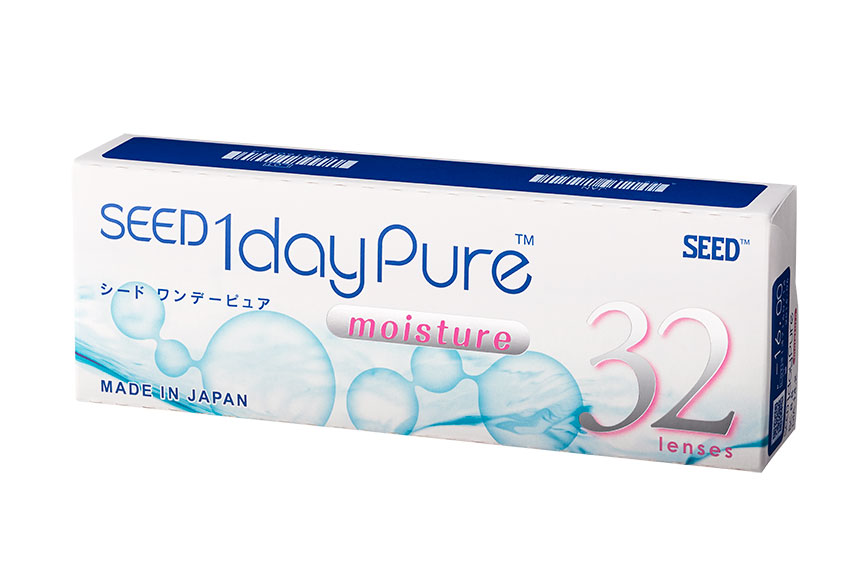
SEED 1dayPure moisture
We have prepared a wide range of productions to cater to all sorts of vision deficiencies. We initially targeted Asians, specifically Japanese, and it is why SEED 1dayPure moisture sells well because that particular product is targeted specifically for sufferers of myopia. We have also prepared SEED 1dayPure EDOF is a daily disposable soft contact lens for presbyopia which is entirely made in Japan. Working jointly with Brien Holden Vision Institute, a world-renowned research institution, Extended Depth-of-Focus (EDOF) technology is adopted, providing good vision at all distances, while minimizing ghosting and haloes. In addition, we have started clinical trials in Japan with the aim of expanding applications in the field of Myopia Progression Control.
As you mentioned, our company has adopted SEED's original material "SIB" (SEED Ionic Bond) which contains both positive and negative ions resulting in electrical stability. This stability ensures high water content while keeping out dust and impurities. Additionally, alginic acid, natural ingredients extracted from seaweed, is used as the moisture agent of the lens which attracts moisture in eyes, and keeps tears on the surface of the lenses. I think the combination of all of these features, components, and unique selling points has led to an increase in our overall sales in Japan. Our products have been welcomed with open arms in Asian markets as well as European countries like Italy, The Netherlands, France, Spain, and Portugal.
One product you have just released is the SEED 1day Silfa, your first daily disposable silicone hydrogel lens which purses the best balance between oxygen flow rate and water content while also providing comfort for the wearer. What was the motivation behind developing this product and how is it superior to more conventional contact lenses?
While it is true that this product is our first daily disposable silicone hydrogel lens, we are not the first company to do so. As a latecomer, we need to be a bit unique in our approach, especially if we want to compete with other, early adopters of the technology.
Many in the industry have changed their minds in recent times, with wettability and wearing comfort becoming key parts of why consumers select the lenses they buy. That is why several companies have now changed the selling point from high detail value to wettability and wearing comfort. That is why I think the numbers claimed by many companies these days are more subjective, and that is why we felt a need to develop a lens that balances both sides. Elevated water absorption, combined with marginal lipid adsorption may make SEED 1day Silfa more wearable for those patients with high sensitivity of lens flexibility and feeling dryness during lens wear.
What I find interesting about this Silfa product is that the silicone hydrogel uses a unique prime balance technology, delivering a sufficient level of oxygen to the eyes with a flow rate of about 96%. Can you tell us in a little more detail about this prime balance technology and some of the challenges you had to overcome in developing it?
The water content of SEED 1day Silfa is 68% more than other silicone lenses. What this means is that the inner lens contains 68% water, and the structure keeps the lens safe. With only 32% of the lens not being water, it is difficult to keep the shape structurally sound. Handling during mass production is also quite a challenge. Many elements need to be satisfied to produce a product that we are proud of and it becomes a balancing act to keep all of these elements in check. Things such as water content, softness, comfort levels, and wettability are things that we have carefully considered when developing this product. Add to that the fact that the lens itself is small, 14.4 millimetres to be exact, and it creates a situation where production could be quite difficult. The plan now is to move ahead and create variations on the technology so that we may further differentiate ourselves from other companies in the same market.
Do you plan to further implement this into newer products or reinvent older ones with this technology?
Yes, but unfortunately as the number of elderly people increases, the volume of teardrops is going to be smaller, so there is going to be a higher level of wettability and lubricity expected by those elderly customers. Introducing SEED 1dayPure moisture Multistage/SEED 1dayPure EDOF design is going to require a lot of hard work on our end. However, saying that this is one product we are expecting to introduce.
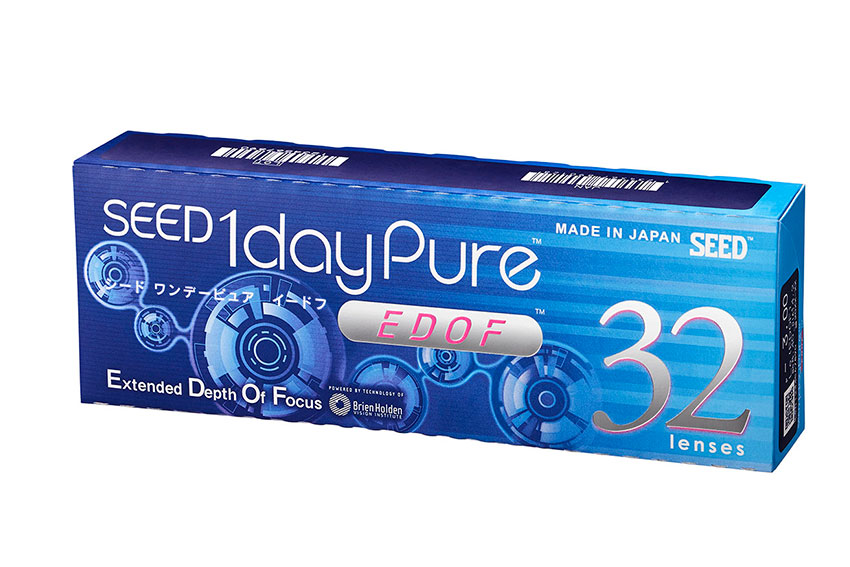
SEED 1dayPure EDOF
You explained that about 70% of high school students have visual acuity of less than 1.0, and most of them are said to be myopic, and if we look at East Asia, 80% of young adults are regarded as myopic. In fact, by 2050, according to the WHO, it is estimated that 50% of the global population will be affected by the condition. One of the reasons touted for this is the screen lifestyle, however, screens are becoming a more important part of everyday life. Computers and phones are essential for communication and for many to perform their jobs. In your opinion, how can we strike a balance with screens while also reducing the chances of myopia?
I understand that in Taiwan, the government has adopted guidelines that require schools to hold a certain number of school hours of classes under direct sunlight, and I think this is a good trial to see the effects of natural sunlight exposure. Although experts have their metrics to make those bold predictions, myopia itself is quite difficult to predict in reality.
A comprehensive understanding of the causes of myopia is unknown. However, we understand that the optical sensitivity in the area of focal points and/or peripheral part make the axial length along the optical direction longer disproportionally against that of the perpendicular direction, which is highly correlated with the progress of myopia. Once it occurs, there is no chance of restoration. The game plan shall be how we can minimize the progress of myopia as much as possible.
As an example, if myopia occurs in an eight-year-old, they will still be growing taller over the next ten years. This aforementioned axial elongation of the eye will continue as long as the person keeps growing taller. That is why quick intervention with orthokeratology or other forms of treatment will reduce this progression. It means that myopia at a younger age has a much higher risk to reach a higher final degree of myopia.
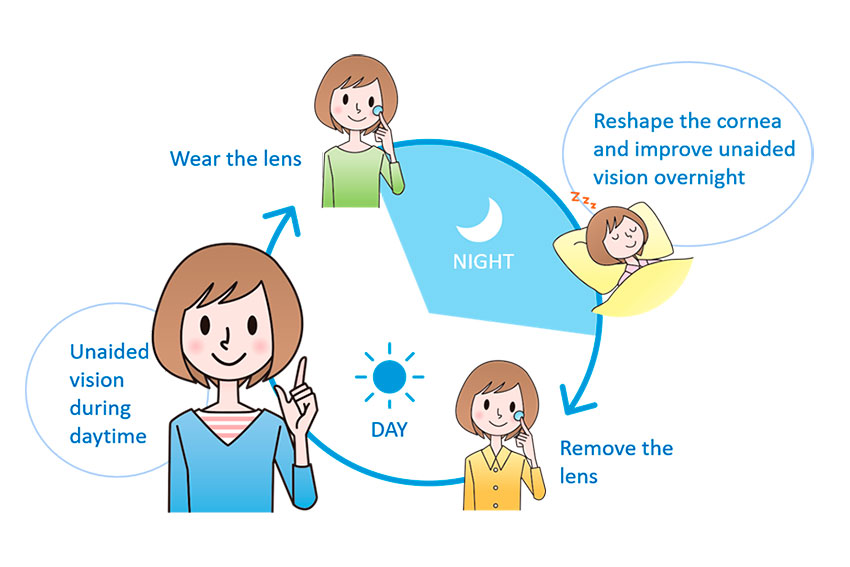
The World Health Organization has published that myopia is the first step towards blindness and that is because, by 2050, it is expected that half the world’s population will become myopic. In Asian countries like China, it is even higher, as high as 90% for teenagers and young adults. There was a study that found 80.7% of high school students in Grades 10 and 11 from nine randomly selected districts of Beijing suffered from some degree of myopia. That might be because the entry standards are so high and those students have to study hard to get in. There is a need for parents and society to take this warning seriously, and the fact that there are some intervention activities to get children under direct sunlight more is a good thing. Earliest possible interventions such as this are important and honestly, required. Additionally, it is recommended that parents avoid sitting their children in front of YouTube all day and limit the amount of screen time their children have.
Strabismus is the medical term for what is commonly known as cross-eyedness, and the number of patients is on the rise. Children can spend multiple hours staring at a screen just in front of their faces when parents resort to using a smartphone to entertain their children. The device defines the muscle movement of the eyeballs. There have been studies that have found excessive smartphone use may cause acute acquired esotropia which is a severe form of strabismus. What happens is the eyeballs are stressed in extreme directions, which causes an imbalance and is extremely unhealthy for young children’s eye health. I know that in Singapore they have made quite a comprehensive announcement to parents by placing posters in public places warning parents of the inherent dangers that come from excessive screen use.
The Japanese government has also recently taken steps by conducting a nationwide survey to discover more information on how myopia is found, and the survey was conducted on children from early ages to teenagers. It seems as if they were trying to discover the rate of accelerants with myopia, and more analysis is required. There need to be more factors taken into account such as gender and living conditions. If these further factors are taken into consideration, more data can be collected and further analysis can be completed. Right now, we have three methods to reduce the acceleration of myopia, and in the future, a fourth may be developed, but as I have mentioned before, it cannot be prevented. The target is a slowdown, but interestingly none of the methods so far are approved by the Japanese government. We have applied a clinical study proposal for myopia management and the trial was recorded and conducted in August 2022. We plan to start another clinical study using one of our contact lenses. The aim for our company is to reach approval domestically here in Japan, and once we receive that, we can convert that to approval elsewhere such as in Europe and Asia.
Are you looking for any overseas partners to help introduce your products internationally, or even for clinical research and development purposes?
We have subsidiary companies in Europe, and they can produce our lineup of contact lenses by themselves. If there are specific needs for a European market, they can change their machinery to produce that. Our subsidiary in Germany is capable of producing our Rigid Gas Permeable (RGP) contact lenses and monthly disposal contact lenses. That is why they can provide products promptly in Europe. Basically, we have internal resources rather than local partners in Europe. In the UK, we have a subsidiary that is capable of producing rigid and soft contact lenses in lathe cut methods. As far as one-day contact lenses are concerned, I think a concentration in production is better for us. In Asia, we have distribution subsidiaries in China, Taiwan, Malaysia, Singapore and Vietnam together with locally appointed distributors such as Australia and the Philippines.
Usually, we build up new plants and buildings and then build up the machinery and equipment in those facilities over time. Buildings are the first investment and the second is the machinery, but of course, with the scale of our production, things do take time. We have additional space to increase production plans in our Kounosu Laboratories in the coming 10 years, Thereafter, we might re-evaluate the market and another Asian country, like China or Southeast Asia, might be more suitable for production.
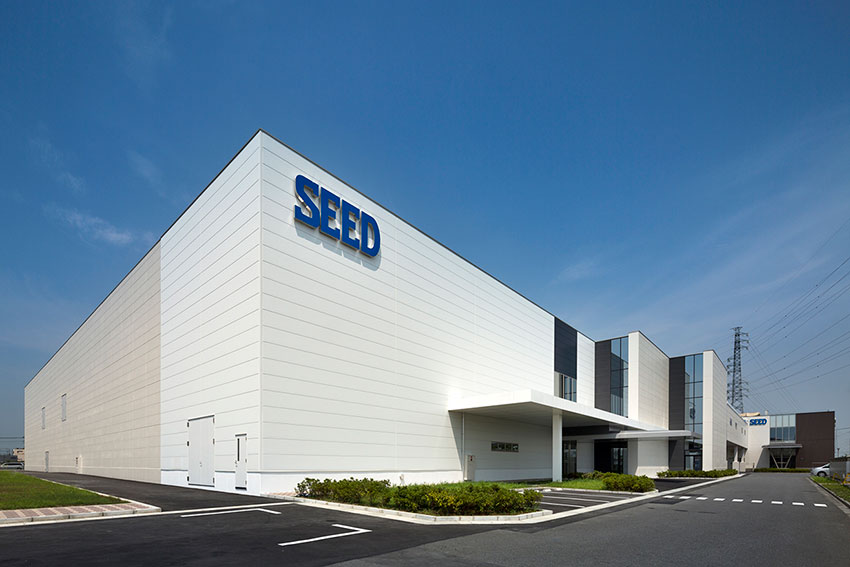
Kounosu Laboratories
To produce contact lenses at such a large scale, several factors are required; water availability, and by that, I mean high-quality water supplies and electricity that needs to be provided without interruptions. Without a stable supply of both water and electricity, whole productions can be shut down and work is just thrown out.
In terms of contact lenses, material costs are not such a big dominant factor. The largest is actually depreciation costs, and then after that, human resources. After that, energy costs come into play, although with rising energy prices around the world, there is a possibility that this jumps above human resources. The fourth largest expense for us is the material costs, and that is why we do not necessarily need to be close to our material provider like some other companies.
We know that you have operations all over the globe in regions such as Europe, and Asia. Moving forward, which countries or regions are you targeting as part of your mid-term strategy?
As a result of the spread of myopia, China and ASEAN countries are going to become key for us. China currently sits at around 1.407 billion people, with a large percentage suffering from myopia to some degree. That is why we see this as a good market for our business. India is also another huge market, with a population slightly ahead of China at 1.408 billion, but Indian people historically have not suffered from myopia as much; around 15%, but now I believe the figure is over 20%. I think if economic development continues there, the percentage of myopia will increase in tandem. A key industry in India is IT and electrical components, and it means that people there are exposed to screens and devices more as the country continues to develop. The traditional way of life is changing so much, and that is why I find India a fascinating market.
The middle-class market is what strikes me as the most interesting there. The high class is its own thing, and the upper 10% of people can buy whatever they want. Lower down though, you have many myopia sufferers and I believe this will also become an important segment for us. In terms of innovative lines of contact lenses, I think those will continue to be mainly targeted in Japan, Hong Kong, Taiwan, China, ASEAN countries and Europe. India is also interesting for its population size and future economic growth.
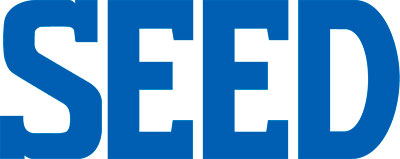 |
Interview conducted by Karune Walker & Sasha Lauture
0 COMMENTS